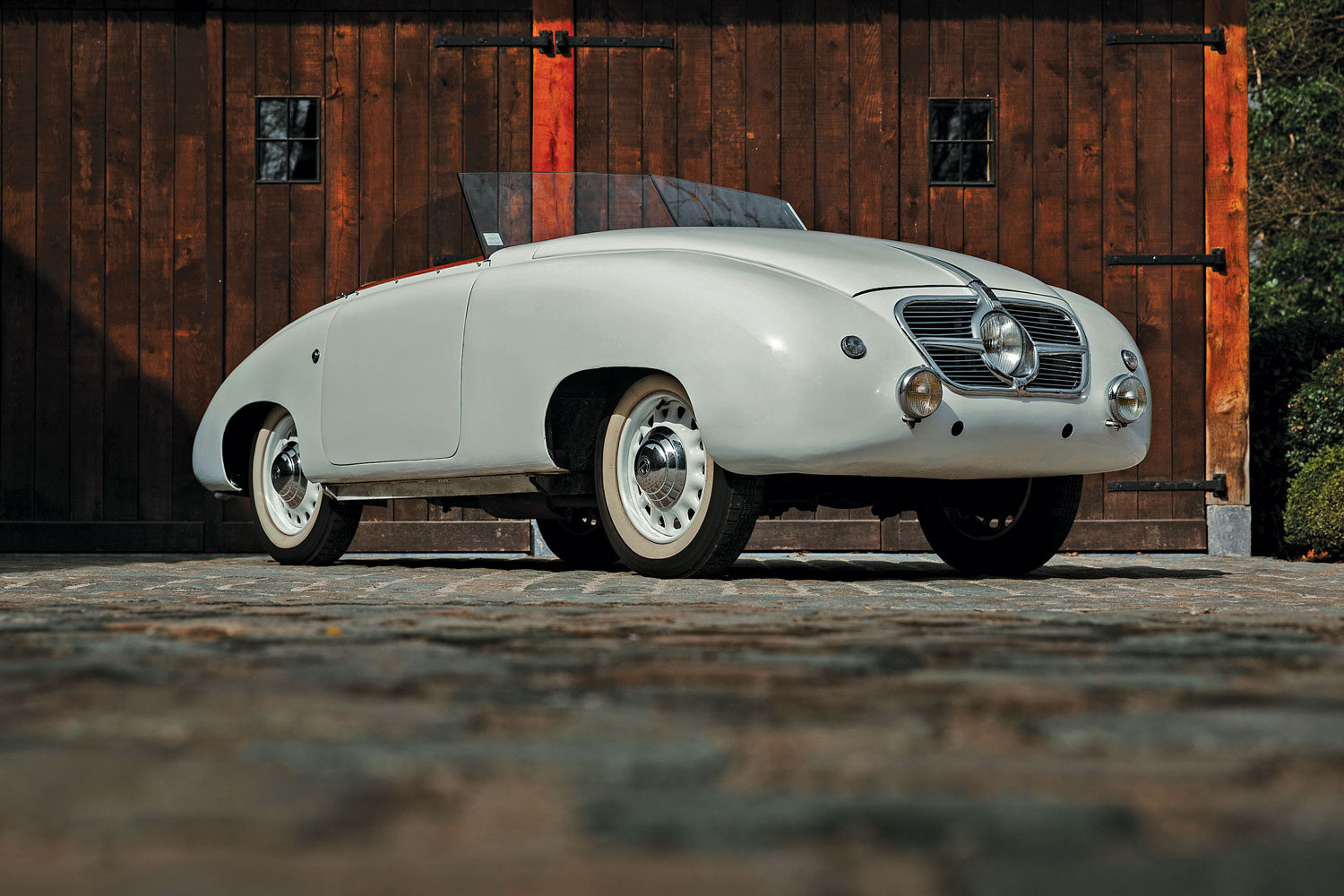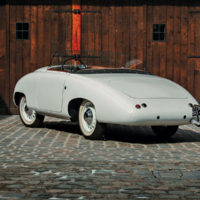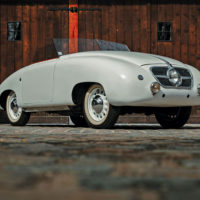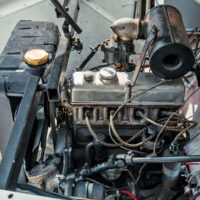SCM Analysis
Detailing
| Vehicle: | 1949 Georges Irat Labourdette Prototype |
| Years Produced: | 1949 |
| Number Produced: | 1 |
| Tune Up Cost: | $100 |
| Chassis Number Location: | Firewall identification plate |
| Club Info: | Georges Irat Club France |
| Website: | http://www.clubgeorgesirat.fr |
| Alternatives: | 1935–39 Georges Irat 6CV roadster, 1937–53 Fiat 1100, 1947–61 Renault 4CV |
This car, Lot 127, sold for $86,031 (€71,300), including buyer’s premium, at Bonhams’ Monaco sale on April 23, 2021.
If you have never heard of Automobiles Georges Irat, you are officially excused. Irat started making cars in France in 1921, producing the complete rolling chassis in-house, including the engine, which was then sent off to the chosen coachbuilder of the purchaser. The result was a quality but expensive vehicle, fabricated in very small numbers. Claims of producing hundreds of cars per year were certainly highly exaggerated.
The small company struggled on into the early 1930s. With bankruptcy looming, an engine maker, Ruby, suggested a partnership, and the Georges Irat roadster was born. It was a pretty car, but the small 1,100-cc engine made it underpowered. Still, it was relatively successful and kept the company ticking until the outbreak of war.
A man with a dream
The end of hostilities saw Georges Irat building diesel engines for utility vehicles at its factory near Bordeaux, in at least enough quantities to permit “le patron” to continue his dream of producing automobiles. He made three prototypes between 1946 and 1949, the first and second of which were said to have been made with magnesium chassis and body. Myth has it that the third, our subject car, was equipped with a 2-liter engine.
Little information survives about these cars. They were probably each an evolution of the one before, conceivably using the same basic chassis from the first prototype. The Labourdette body from the third prototype was discovered in the abandoned Georges Irat factory with no chassis or engine, but the interior was complete.
Body building
Labourdette traced its history to making horse-drawn carriages in Paris during the 1850s. By the end of the century it had diversified, constructing bodies for early automobiles. It accrued a fine reputation, and by 1910 had branches in both Madrid and Saint Petersburg, catering to the royal families of Spain and Russia.
In time, the company’s designs became more innovative. Labourdette was notable for creating “skiff” bodies that featured a pointed rear, which strongly resembled the small boats that were typically made of varnished wood and used on inland waterways. When this fashion waned in the late ’20s, it continued to produce bodies for French carmakers, often with similarly unusual and stylish results.
In the mid-1930s, Labourdette invented “Vutotal” (translation: total view) frameless windows, which were not just stylish but also practical. The firm only made two bodies after the war, one for the small, rear-engine Renault 4CV, which is not know to have survived. The other was for Georges Irat’s front-engine prototype. Each one used the Vutotal system and both were similarly audacious modernist designs.
A forgotten pioneer
If the three Georges Irat prototypes indeed used a magnesium alloy for their chassis, it would make Irat a true pioneer of the automotive industry. Pure magnesium is unstable, with a low flashpoint, and corrodes easily. However, it is strong and far lighter than aluminum. Combining it with another alloy results in a more stable metal that is still extremely lightweight while largely eliminating the less-desirable traits.
This combination was used as early as World War I for fighter planes, and Mercedes used it for the bodies of its SLR race cars in the ’50s. The legendary Porsche 917 had a magnesium-alloy chassis. For this metal to appear in the chassis of an automobile in the immediate aftermath of World War II — 20 years before the 917 — would have been revolutionary. At that time, even sourcing such an alloy would have been onerous.
It is a shame that the chassis no longer exists, yet this is not surprising. In the 1950s, even Bugattis were being scrapped for the pricey metal content of their aluminum engines. When Irat’s dream died, the scrap value of the chassis was fairly high. The Labourdette body, however, was made in less-valuable steel, and thus survived.
Mistaken identity
When the Labourdette body was discovered, the decision was made to mount it on a Simca 8 chassis. This was basically a pre-war Fiat 1100 built under license in France. It was economical and readily available, and as a bonus, its length corresponded to the body.
A better solution might have been to use a pre-war Georges Irat chassis. Certainly, this would have been more expensive and perhaps required some modifications. But the car would then be a Georges Irat, stem-to-stern. In its current form, it is a Simca with an exotic body.
Sometimes, with the likes of grand marques such as Hispano-Suiza and Bugatti, cars are valued solely on the basis of a chassis. Some practical bodies are so ugly that there is only one thing to do: Bin them and start again. In this case, we have the opposite: a body that has lost its chassis.
The sale price was therefore based on the fact that this is a highly unusual and attractive Labourdette. The buyer certainly did not buy this car for its Simca bits — he purchased the last sculpture made by a renowned French coachbuilder.
The new owner should certainly consider hunting down a 1930s Georges Irat restoration project, adjusting the chassis, and junking the rest. There is even a tradition of French automobiles receiving later bodies as fashion changed. That could be the case here. Even if the car will never be pure, it would merit being called a Georges Irat. With strange works of art by obscure artists selling for far more than this in our weird contemporary world, this will be seen as a good buy one day in the future. ♦
(Introductory description courtesy of Bonhams.)




